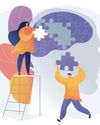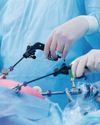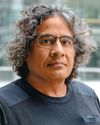
When she started her practice about two decades ago, Dr Darshana Sanghvi, a radiologist from Mumbai’s Kokilaben Dhirubhai Ambani Hospital, had almost 12 to 14 assistants, each of whom would do everything manually. Today, her work and the way she does it have completely changed. “I did not even have digital information then,”she gasps. “Mostly, the image stats that came from the MRI would be captured on films, which would then be put up on the physical film box, and not on a computer. So if there are a hundred images, which would be the case on any given day, someone would have to manually do everything—right from print the films, collect and segregate them, put them on the view box. Then I would see them and dictate the report to a typist. The report would be printed and dispatched. There were at least 12-14 people to do all of this. But now, it has come down to just four of them as everything is done by artificial intelligence (AI).”
Now all they have to do is simply tell the machine orally that they need to do an MRI, say, of the knee for trauma. “From thereon everything is automated,” says Sanghvi. “The images are acquired by deep learning algorithms, which, in turn, send them to the servers for post processing of the data, which was done by us in the past and was extremely time-consuming. This is a step prior to interpretation.”
Denne historien er fra December 10, 2023-utgaven av THE WEEK India.
Start din 7-dagers gratis prøveperiode på Magzter GOLD for å få tilgang til tusenvis av utvalgte premiumhistorier og 9000+ magasiner og aviser.
Allerede abonnent ? Logg på
Denne historien er fra December 10, 2023-utgaven av THE WEEK India.
Start din 7-dagers gratis prøveperiode på Magzter GOLD for å få tilgang til tusenvis av utvalgte premiumhistorier og 9000+ magasiner og aviser.
Allerede abonnent? Logg på

Hat-Trick Or Has-Beens?
India look to win their third straight Test series in Australia, but ageing superstars and recent humiliation at home have cast a shadow on their hopes

Constipation Can Put Your Heart At Risk
PEOPLE WITH CONSTIPATION have an increased risk of major cardiac events, including heart attack, stroke and heart failure, especially if they also have high blood pressure, finds an international study published in the American Journal of Physiology-Heart and Circulatory Physiology.

Too Much Sitting Can Accelerate Ageing
SITTING FOR EXTENDED PERIODS can harm the heart and accelerate ageing, even if you are young and get the minimum recommended amount of daily exercise, according to a US study published in the journal PLOS One.

Efficiency and innovation
As health care evolves, professionals must employ innovative methods to refine their skills

Level up
Only 30 per cent of needy patients are able to undergo transplant in India; we need more dedicated transplant centres

HOPE STEMS FROM A CELL
While stem cell therapies have shown success in treating blood disorders, orthopaedic ailments, autoimmune diseases and eye issues, there is hope that they can one day treat patients with heart disease, blindness, Parkinson's, HIV, diabetes and spinal cord injuries

Mind matters
Your mindset can limit or expand your physical ability

Cutting edge
Would you go under the knife if a robot was the one holding it? Or would you say, \"No way, I need a human touch\"? You might have to decide soon because a robot that can imitate skilled human surgeons is already here.

The smallest cut
Minimally invasive surgeries have a bright future, with virtual reality and 3D procedures offering greater precision and AI on the horizon

Signalling a revolution
Canadian scientist and entrepreneur Sachdev Sidhu is focused on bringing cutting-edge antibody engineering to his country of origin